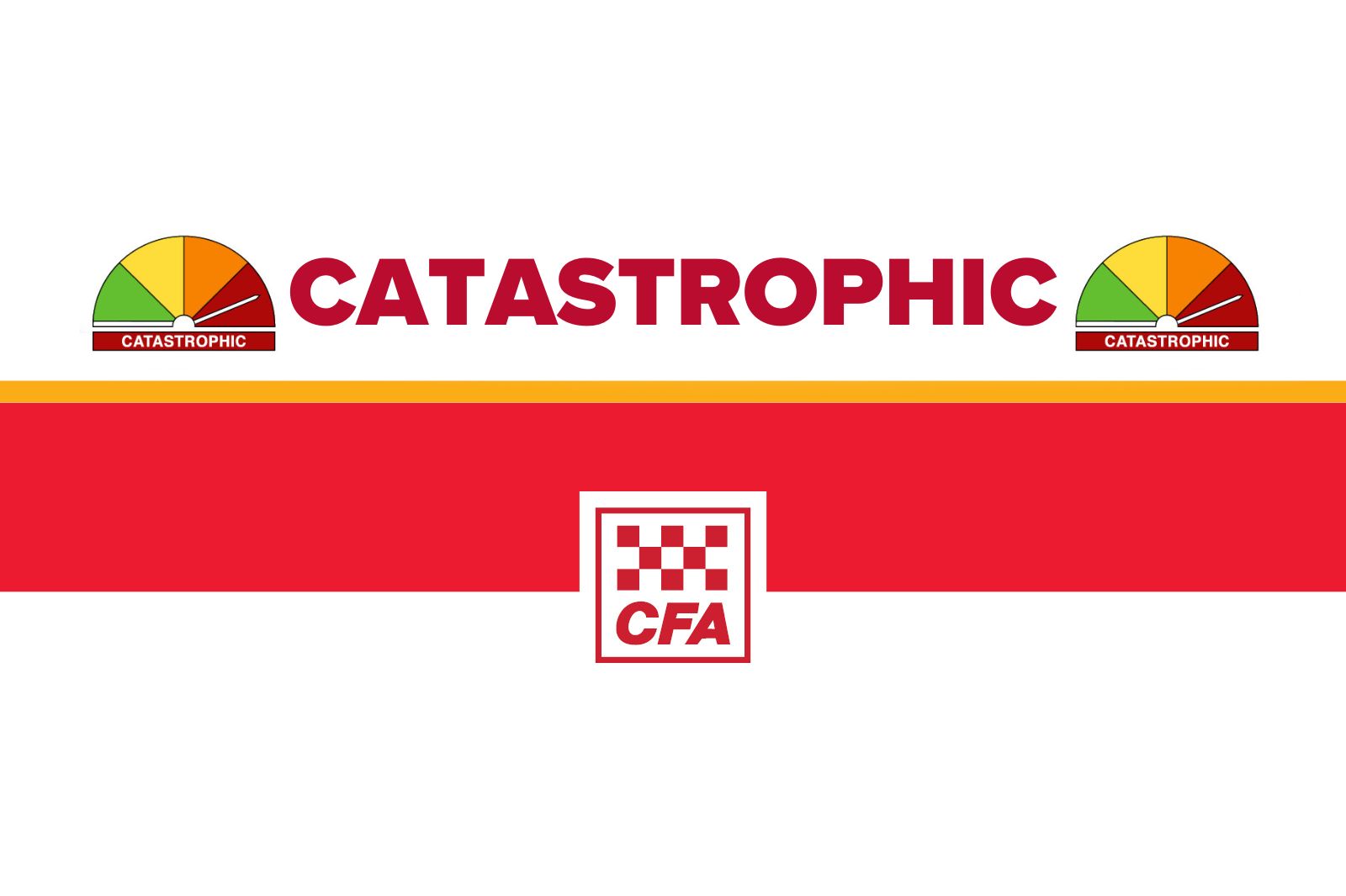
With active fires ongoing in the landscape, CFA is urging community members in the west of the state to be on high alert tomorrow due to a Catastrophic Fire Danger Rating in the Wimmera Region.
Due to the Catastrophic and Extreme weather conditions tomorrow, a Total Fire Ban (TFB) has been declared for the Wimmera, Mallee, South West, Northern Country, North Central and Central (includes Melbourne and Geelong) fire weather districts.
A Total Fire Ban means no fire can be lit in the open air or allowed to remain alight from 12.01am to 11.59pm on the day of the Total Fire Ban.
A Catastrophic Fire Danger Rating means conditions will be the most dangerous for a fire under the new Australian Fire Danger Rating System. If a fire starts and takes hold, lives and homes are likely to be lost.
Tomorrow’s conditions will be hot and windy with temperatures reaching mid 40s in the northwest and north of the state. Strong northerly winds are expected around 30-40km/h gusting to 60-80km/h. Dry lightning is also predicted in the western and central parts of Victoria tomorrow afternoon.
CFA Chief Officer Jason Heffernan said tomorrow’s conditions, along with significant fires going in the west, represent a significant risk to the community.
CO Heffernan said the safest option for people currently in bushfire risk areas must start planning to leave tonight or early in the morning.
“Tomorrow’s conditions will put you and your families lives at risk if a fire starts and takes hold,” CO Heffernan said.
“Do not plan to defend your home on Catastrophic fire danger days – the safest place to be is away from high-risk areas such as campsites, parks and forests.
“Catastrophic conditions make it difficult for firefighters to control fires should one start.
“Be prepared for fire, monitor conditions and know where to get information so you can make good decisions about your safety.
“Don’t wait for an official warning before you leave, emergencies can start quickly and threaten lives and homes within minutes.
“If you are caught out and all other bushfire plans have failed, be aware of local last resort options such as Neighbourhood Safer Places and designated Community Fire Refuges.”
Victorians can find out if a Total Fire Ban is declared on the CFA website www.cfa.vic.gov.au, where it is usually published by 5pm the day before a Total Fire Ban.
For more information on what you can and can't do visit the Can I or Can't I page on the CFA website.
Victorians should also make sure they have access to more than one source of information.
They include:
- ABC local radio, commercial and designated radio stations of Sky News
- The VicEmergency App
- The VicEmergency website www.emergency.vic.gov.au
- The VicEmergency Hotline on 1800 226 226
- CFA or VicEmergency Twitter or Facebook
How to prepare for a Catastrophic fire danger day:
- Catastrophic fire danger signals the worst possible grass and bushfire conditions.
- Do not plan to stay and defend your home on Catastrophic fire danger days. Homes are not designed or constructed to withstand fire in these conditions – even the best prepared homes will not be safe. You could lose your life or be seriously injured.
- The safest place to be is away from high-risk areas such as campsites, parks and forests.
- If you’re in a bushfire risk area, plan to leave your home or accommodation early in the morning or the night before.
- Pack an overnight bag with essential supplies including provisions for pets and animals.
- Avoid unnecessary travel and check for road closures and detours.
- Check whether schools, childcare, transport and health services are impacted and adjust travel accordingly.
- Prepare for power outages.
- Check on and assist any vulnerable neighbours.
- If you are on mains water, turn off hoses and sprinklers if you evacuate your property.
What to do on a Catastrophic fire danger day:
- You won’t always receive a warning or be told what to do if a fire starts. Don’t wait and see - it’s up to you to be prepared. Know what to do and take action.
- You should never wait to receive an official warning before you leave. Emergencies can start quickly and threaten lives and homes within minutes. Leave bushfire risk areas early in the morning or the night before.
- Be prepared for fire, monitor conditions, and know where to get information so you can make good decisions about your safety.
- If you get caught out during a fire, know where your last resort options are including Neighbourhood Safer Places and designated Community Fire Refuges. These are places of last resort when all other bushfire plans have failed.
- They may protect you and your family from direct flame and radiant heat, but they do not guarantee safety.